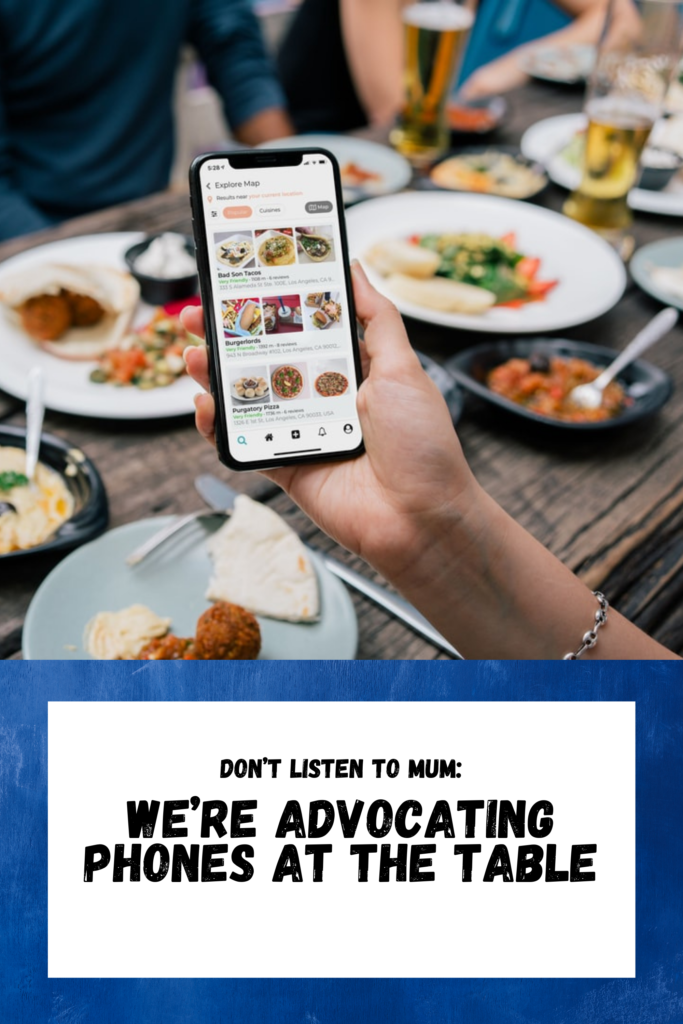Don’t Listen to Your Mum: We’re Advocating Phones at the Table
Having your phone out at the dinner table has long been considered an act of rudeness, soon it might be expected when dining.
Electronic ordering is a clever concept that makes perfect sense on paper. Yet, up until recently, it’s struggled to evolve beyond the flashing, beeping squares that tell the customer their food is ready for collection. Over the years, different apps made it to market, with vows to make service quicker and more efficient. Yet most restaurant managers were reluctant to implement the technology, and instead continued with a more traditional table service model.
Now it might be a different story.
If 2020 has taught us anything, it’s that some change is unavoidable. And whether you like it or not there is a tech revolution happening within the hospitality industry. The impact of the pandemic has forced many business owners to adopt a more digital approach to dining.
Electronic ordering platform Me&u conducted a survey of over 500 Australians in April and found that 94% of customers said they don’t want to handle cash. Furthermore, 64% said that they don’t want to touch a menu, even if it’s a disposable one. So, if this is the preference of your customers, you might want to start looking into electronic ordering solutions.
Australia has a variety of different apps available (Me&u, HungryHungry, Liven, Skip) which have similar features. It’s pretty simple stuff, seat guests who then use their phones to navigate their dining experience. Whether it’s browsing the menu or placing an order, this technology puts a lot of what the wait staff does in the hands of the customer. If you’re considering trialling this tech at some stage, here are a few things to think about:
1) What type of business are you?
With such a push for contactless dining and social distancing, the interest in electronic ordering platforms has grown tremendously. But it’s still very much an evolving idea, and the platforms are not tailored for every type of venue. Chief executive of Sydney’s Solotel Group has said:
“With casual dining they can work, but in terms of fine dining, we’re not sure. You would have to deliver it in a different way…”
Understanding your business is key to unveiling a procedure like this, because you may lose some of the ‘experience factor’ that patrons are used to.
2) When should I jump on it?
There’s no time like the present (or so they say) but there may be incentives to waiting. If you are seriously considering it, it is important to have a strong plan in place. There’s the ever-shifting structure of the hospitality industry, so perhaps you’d like to see what’s in store for 2021 first. The other reason that you might wait is to see how these apps might develop over time. The interest in these apps is booming, so giving the market some time to develop may work in your favour.
On the other hand, jumping on this idea now shows that you’re taking customer safety seriously and are willing and ready to adapt. With less of an emphasis on ‘packing out’ venues across most states, the lighter foot traffic makes for an easier transition into practices of this nature.
3) What to do with your staff?
The idea of technology taking someone’s hours has never sat well with the public in general, which makes the introduction of electronic ordering a delicate process. It’s important to be clear on what your intentions are and how your employees factor into the experience you’re aiming to create.
If you’re aiming to cut costs by bringing in electronic ordering, you’re looking at it all the wrong way. In many cases, a strong team is the most valuable asset you can have in a business, and in hospitality, there’s always something to be done. There might be less customer interaction at the moment, but as the industry evolves through the pandemic, you’d be wise to seek out what skills your staff can bring to the table outside of table service.
The verdict is still out on what this kind of power does for the overall experience, but its clear customers enjoy the personal interaction that comes with dining. But as an industry, we are all adapting with the times. Have you incorporated contactless ordering into your venue? We’d love to hear from you.
